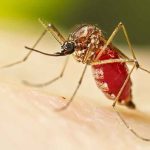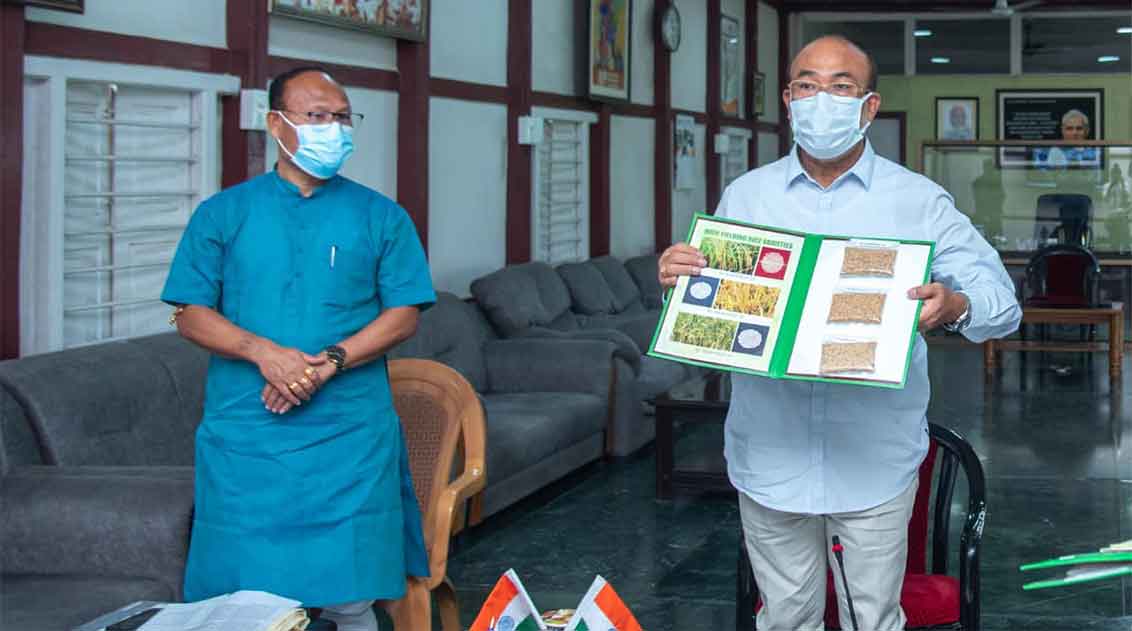Imphal: The government continues to address the key challenges of agriculture in the state and the Northeast region, including low productivity, small holdings, under utilization of irrigation potential and inadequate infrastructure along the supply chain.
This was said by chief minister N. Biren Singh at the inaugural session of a national virtual workshop organised by ICAR NEH Region, Manipur on the topic, ‘Potential Crops of North East India: Prospects and Challenges’ as the chief guest.
Agriculture minister O. Lukhoi Singh and commissioner (agriculture) M. Joy Singh were also seated with the chief minister.
Biren said agriculture continues to be the mainstay for the majority of the population in Manipur and the NE region, which is endowed with diverse agro-climatic conditions with varied soil types and abundant rainfall. As a result, there is huge potential for promising agricultural and horticultural produce and value-added products that can be marketed within the country and abroad, he added.
Stating that there is a changing demand for not only more quantity, but food with quality, nutrition and taste, the chief minister said the answer to these demands lies in crop diversification and use of new technology. Towards this end, he said, ICAR Manipur Centre, which was established in 1975, has been rendering valuable services to the state. It had been providing regular advisories, weather data and forecasts for the benefit of the farmers, the chief minister said and added that ICAR had also supported in formulation of state action plans and strategies during Covid pandemics, floods and droughts in collaboration with various state government departments.
Maintaining that the NE region has many more potential crops, horticultural and vegetable plants, which need to be studied and commercialized as high value organic and nutritious food, he expressed hope that ICAR would explore further on the rich natural resources available for the benefit of the farmers.
Lukhoi said the state department is working along with ICAR with its full scientific and technical supports. In the state government’s strategy for self-sustained agriculture through double cropping, production of 9 lakh MT of rice is being targeted against the present production of 5.10 lakh MT by increasing the seed replacement rate from the existing 20 percent to 60 percent. The seed distribution programme is also a part of the strategy, he added.
With new varieties of rice coming up from ICAR, he also expressed hope that the target production of rice would be achieved within five years in the state. Lukhoi urged the central government to explore the possibilities of increasing manpower in ICAR Manipur Centre.
He was glad that ICAR had been collaborating with the State Agriculture Department in proper distribution of the high yielding variety of rice seeds particularly RC Maniphou-13 which had the highest demand by the farmer in the State.
Joy said the state government had constituted a sub-committee for enhancement of rice production in Manipur. After rounds of discussions, the sub-committee had made recommendations like increase in seed replacement rate, increase of cropping intensity, enhancement of irrigation facilities, adoption of more intensive cultivation practices, maintaining soil health, providing judicious soil nutrients, facilitation of credit finance crop insurance, marketing and creation of rural storage infrastructures, farm mechanization etc. for increase in rice production.
He expressed confidence that the workshop would make meaningful recommendations to transform the agriculture sector for the welfare of Manipur, in particular, and for the region in general. The state agriculture department would definitely like to make use of the outcome of the workshop, he added.
The dignitaries released eight different crop varieties introduced by ICAR Manipur Centre. The three rice varieties were RC Maniphou 14, RC Maniphou 15 and RC Maniphou 16 while the two maize varieties introduced for the first time in Manipur were RC Manichujak 1 and RC Manichujak 2. On the other hand, two varieties of Perilla introduced for the first time in the country were RC Manithoiding 1 and RC Manithoiding 2 while the variety of Brinjal was RC Manikhamen 1.
They also virtually distributed agricultural inputs to about 1000 farmers. These include 10 tonnes of certified seeds of RC Maniphou-13 provided by the state agriculture department.












